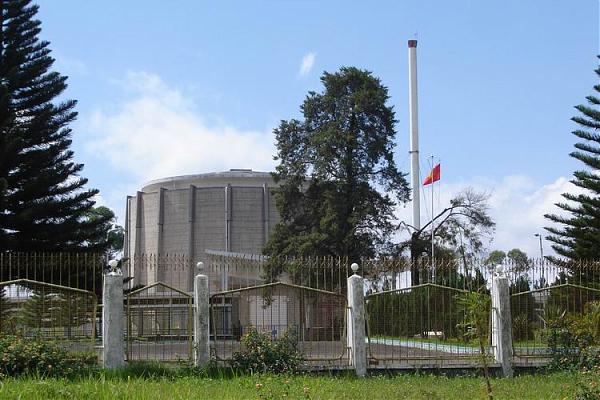There must be means of monitoring the neutron flux distributions in the reactor core in Vietnam
On December 28, 2012, the Ministry of Science and Technology issued Circular 30/2012/TT-BKHCN on nuclear safety applicable to the designs of nuclear power plants in Vietnam.

There must be means of monitoring the neutron flux distributions in the reactor core in Vietnam (Internet image)
Article 32 of Circular 30/2012/TT-BKHCN stipulates that the neutron flux distribution in the reactor core must be inherently stable in all operational state, including the states arising after shutdown, and during or after refueling, and states arising from abnormal operation; the quality of the reactor core does not degraded. The need for the control system for maintaining the shapes, levels and stability of the neutron flux within specified design limits in all operational states shall be minimized.
At the same time, means of monitoring the neutron flux distributions in the reactor core must be provided for the purpose of ensuring that the neutron flux in the core does not exceed the design limits. The design of reactivity control devices must take into account the degradation of equipment caused by the effects of irradiation, burnup, changes in physical properties and production of gas.
In addition, The maximum degree of positive reactivity and rate of reactivity increase in operational states and accident conditions shall be limited or compensated. The quality reactor core must be assured over the lifetime of the nuclear power plant. Failure of coolant pressure boundary must be prevented. The capability of cooling must be maintained, and significant damage to the reactor core must be prevented.
In addition, Article 33 of Circular 30/2012/TT-BKHCN also stipulates that means must be provided to ensure the capability to shut down the reactor in any situation, even when the positive reactivity of the reactor is maximum. The effectiveness, speed of action and shutdown margin must ensure that that the design limits for fuel are not exceeded.
In particular, when assessing the effectiveness of the means of shutdown of the reactor, consideration shall be given the failures arising in the plant that could make part of the means of shutdown inoperative or that could result in a common cause failure. The means for shutting down the reactor must satisfy the following requirements: There are at least two diverse and independent systems for the purpose of excluding common cause failures. At least on of the two reactors shutdown systems must be capable of keeping the reactor subcritical by an adequate margin and with high reliability; The increase in reactivity leading to unintentional criticality during refueling, shutdown, or while the reactor is in the shutdown state must be prevented.
Note: Instrumentation shall be provided and tests shall be regularly carried out for ensuring that the means of shutdown are always ready in any plant state.
More details can be found in Circular 30/2012/TT-BKHCN, which comes into force from February 11, 2013.
Le Vy
- Key word:
- reactor core
- Vietnam
- Number of deputy directors of departments in Vietnam in accordance with Decree 45/2025/ND-CP
- Cases ineligible for pardon in Vietnam in 2025
- Decree 50/2025 amending Decree 151/2017 on the management of public assets in Vietnam
- Circular 07/2025 amending Circular 02/2022 on the Law on Environmental Protection in Vietnam
- Adjustment to the organizational structure of the Ministry of Health of Vietnam: Certain agencies are no longer listed in the organizational structure
- Vietnam aims to welcome 22-23 million international tourists in Vietnam in 2025
-

- Number of deputy directors of departments in Vietnam ...
- 15:04, 05/03/2025
-

- Cases ineligible for pardon in Vietnam in 2025
- 14:43, 05/03/2025
-

- Decree 50/2025 amending Decree 151/2017 on the ...
- 12:00, 05/03/2025
-

- Circular 07/2025 amending Circular 02/2022 on ...
- 11:30, 05/03/2025
-

- Adjustment to the organizational structure of ...
- 10:34, 05/03/2025
-

- Notable new policies of Vietnam effective as of ...
- 16:26, 11/04/2025
-
.Medium.png)
- Notable documents of Vietnam in the previous week ...
- 16:21, 11/04/2025
-
.Medium.png)
- Notable documents of Vietnam in the previous week ...
- 16:11, 02/04/2025
-
.Medium.png)
- Notable new policies of Vietnam to be effective ...
- 16:04, 02/04/2025
-
.Medium.png)
- Notable new policies of Vietnam effective from ...
- 14:51, 21/03/2025
 Article table of contents
Article table of contents
